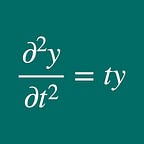Is the Covid vaccine as effective against the Omicron strain as it is against the Delta strain? There is a simple way to test it.
We will compare the two groups using Fisher’s exact test. (Of course, the data used for the test is hypothetical.)
A new variant of the coronavirus was discovered in South Africa this past November and named the Omicron strain.
At this point, it is unknown how dangerous this mutant strain is, but there are some who say that the vaccine may be less effective than previous mutant strains.
To see how effective the vaccine is against this Omicron strain, we want to compare it to the effect of the vaccine on the Delta strain. And let’s assume that we have a limited number of subjects. In that case, we cannot use the asymptotic theory of statistics, so we cannot use something like the Chi-square test. In this case, we can use Fisher’s exact test.
Fisher’s exact test
Typical methods for testing the hypothesis of uniformity of the two groups include the goodness-of-fit chi-square test, the likelihood ratio test, and Fisher’s exact test. Among them, Fisher’s exact test is a testing method that does not use asymptotic distribution theory and is a conditional testing method based on a conditional distribution.
First of all, using two groups A_1 and A_2, let us represent the 2-by-2 contingency table as follows.
And we want to see if there is a significant difference in the distribution of these two groups (A_1 and A_2).
Suppose x_11, x_12, x_21, x_22 are variables, and x_11 + x_12, x_11 + x_12, x_11 + x_21, and x_12 + x_22 are all constants (They are not variables.) And we have the equation: x_11 + x_12 + x_21 + x_22 =N, where N is a constant.
This means that among the 4 variables, we only have to determine the value of x_11 in order to determine other 3 variables. Therefore, we focus on x_11, considering the conditional distribution of x_11.
We see that the conditional distribution of x_11 is a hypergeometric distribution:
Practically, we can express the probability as follows:
Null hypothesis and Alternative hypothesis
Then we consider the null hypothesis H_0 and its alternative H_1:
And here the hypothesis test is one-side. In this case, the P-value is the probability where X_11 is greater than x_11. That is,
If the P-value is smaller than the significance level, the hull hypothesis is rejected.
Survey (fiction)
Here you go. Consider the effects of the Covid vaccine on the two groups (Omicron and Delta strains) that I mentioned earlier.
The null hypothesis is that the effect of the Covid vaccine on the two groups is equal, and the alternative hypothesis is that the effect of the vaccine on the omicron strain is smaller than the effect of the vaccine on the delta strain.
Now assume that the number of subjects is eight each for Omicron and Delta. Then we also assume that the following contingency table shows the results of a study to determine whether Covid’s vaccine was effective for 6 months for each of the Omicron and Delta strain groups.
In this case, the P-value is:
Calculating this, we obtain a p-value of 0.066, lower than 0.10. Thus we can reject the null hypothesis at the 10% significance level. This means that at this significance level, the effect of the Covid vaccine against the Omicron strain is significantly less than that against the Delta strain.
